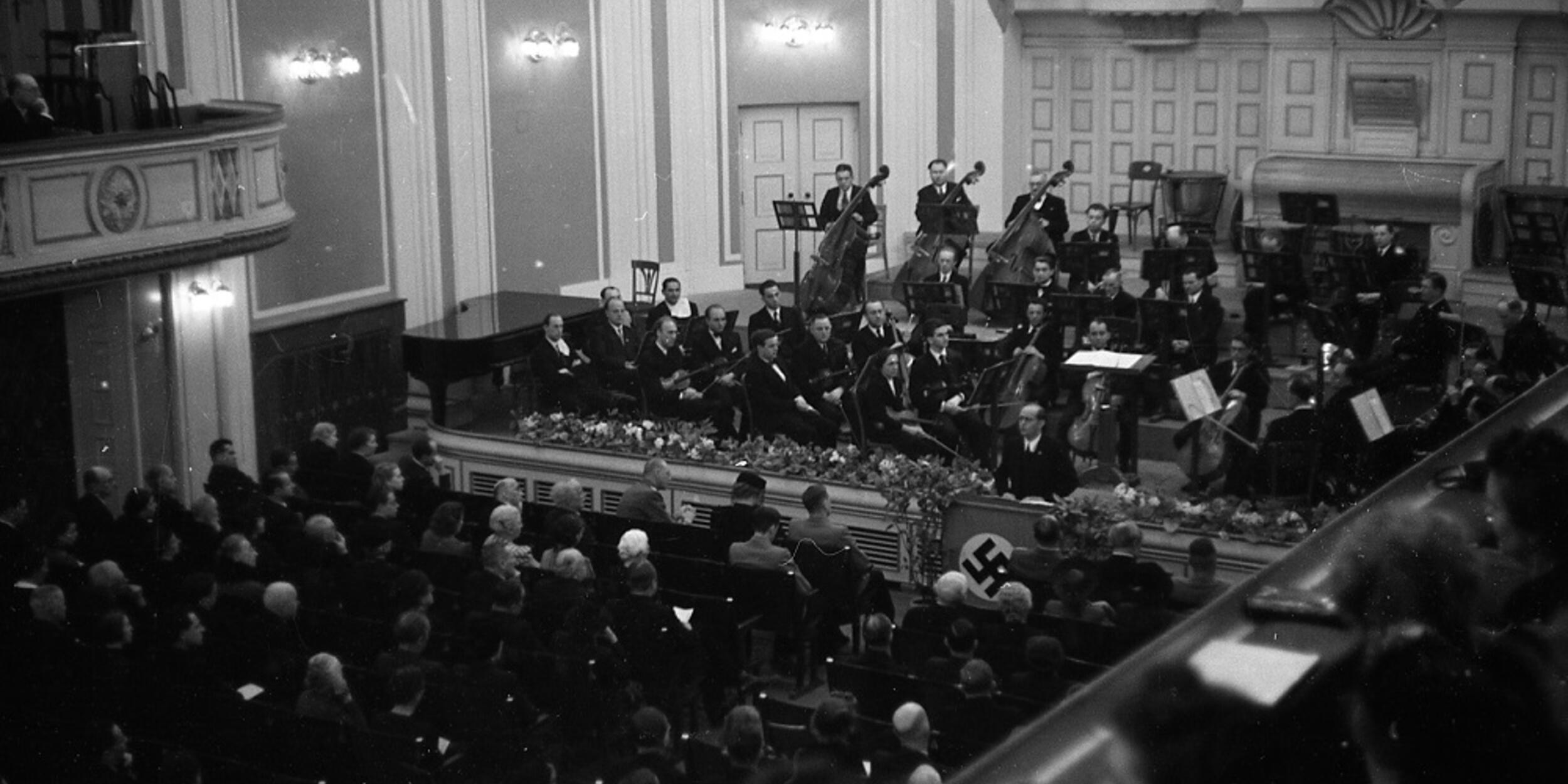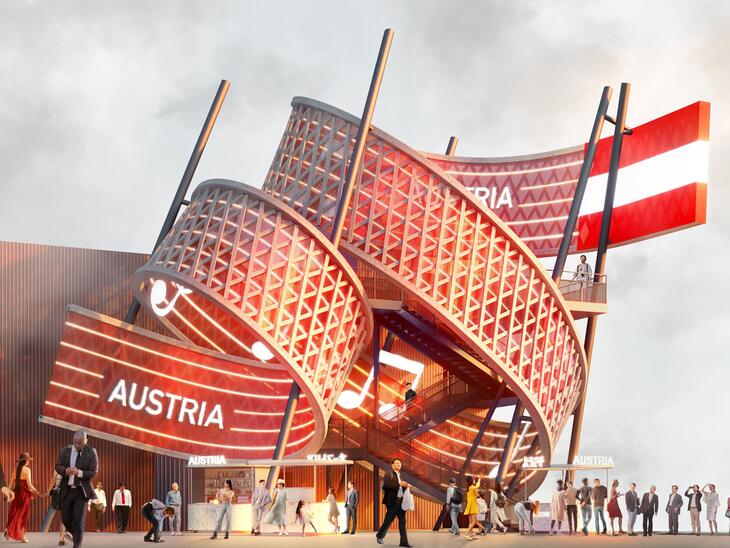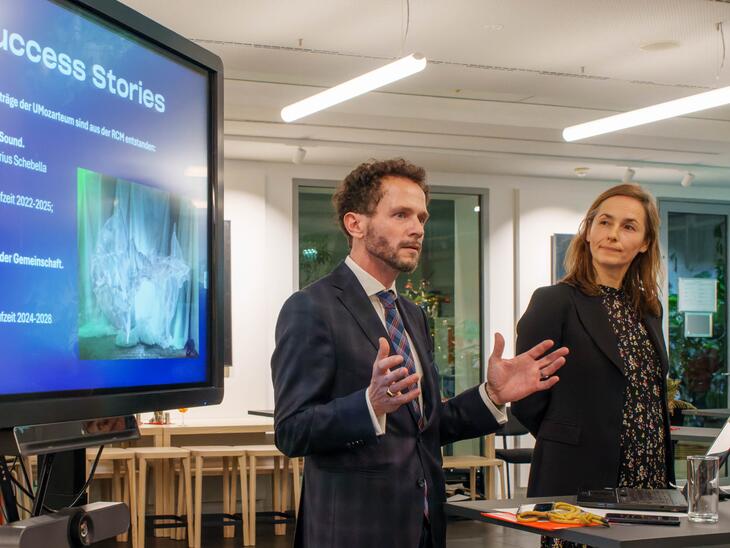In the Focus of Cultural Politics: The Mozarteum 1922-1953

"The Mozarteum in distress", "Help us - a cry of distress from the Mozarteum" - headlines like these characterized Salzburg's press coverage in the spring of 1921. After four years of war, during which it had been possible to maintain the teaching activities of the young conservatory, the Mozarteum was on the brink of extinction.
Image
the Mozarteum in the Nazi era: Ceremonial act on the occasion of the elevation of the Mozarteum to the status of Reichshochschule in April 1941
The educational institution's sponsoring association, the International Mozarteum Foundation, had been struggling with financial challenges for some time. With the galloping inflation in the post-war years, the conservatory developed into a 'bottomless pit'. Decision-makers searched desperately for solutions to reorganize the institution - what finally followed was the nationalization of the conservatory in 1922. "The Mozarteum is saved," the media could now headline.
Volume 2 of the history of the University Mozarteum Salzburg is dedicated to this year of upheaval, 1922, as well as the subsequent eventful decades up to the academy's founding in 1953. This period, which is illuminated from multiple perspectives in the anthology, was marked by political upheaval like no other phase in the history of the educational institution. This book addresses these and many other questions: what role the changing political systems - the First Republic, Austrofascism, National Socialism, the beginning of the Second Republic under U.S. occupation - played in the history of the Mozarteum's development, how intensively the educational institution was put at the service of National Socialist cultural policy, what significance structural, personnel and content-related continuities and discontinuities had.
In the course of its long history, the Mozarteum's self-images, attributions to others, and identity constructions have changed many times, especially in the context of sociopolitical developments. founded in 1841 as part of the Cathedral Music Society, the main goal of this clerical music school was to maintain the high quality of local church music. The school acquired a 'new' identity when it separated from its sponsoring association in 1880 and became part of the civic-oriented International Mozarteum Foundation. finally, in 1914, the now conservatory moved to the Mozarthaus on Schwarzstraße, better known today as the Mozarteum Foundation. However, it was not the upgrading to a conservatory, nor the First World War that broke out a few weeks later, but rather the nationalization outlined at the beginning that heralded a new era in the history of the Mozarteum. This was linked to ministerial conditions, specifically to massive cost-cutting measures. Teaching positions had to be eliminated, subjects cut and the number of students reduced. As a reaction to the austerity policy imposed from above, the then director Bernhard Paumgartner implemented various profile-building measures in the following years in order to strengthen the Mozarteum's image and increase its competitiveness. Among other things, a music history seminar was installed, the general canon of subjects was expanded, teacher training courses were pushed and a school library was established. In addition, the educational institution presented itself to an interested public with a variety of events and participated actively in Salzburg's musical cultural life. All in all, despite the world economic crisis, which had also left its mark here, a phase of stabilization and consolidation emerged at the Conservatory from the mid-1920s onward. This state of affairs remained largely intact even under Austrofascism. The political upheavals from 1933 onward did not have any serious personnel or ideological effects on the Conservatory. There were no politically motivated dismissals, and yet politics now played a recognizable role in everyday teaching. In October 1934, for example, the Conservatory held a memorial service with appropriate speeches for the assassinated Federal Chancellor Engelbert Dollfuß, references to the new political regime were made in the annual reports, and the Austrofascist double-income law discriminating against women also became virulent at the Conservatory, even if it was not enforced in its final consequence.
In contrast to the Vienna State Academy for Music and the Performing Arts, where the first rigorous "purges" were carried out as early as March 12, 1938, and teachers were "suspended" for "racial" reasons, the "Anschluss" to Hitler's Germany did not initially mark a serious upheaval at the Mozarteum. At the Conservatory, which had been considered bourgeois-German national since the end of the 19th century, there was evidence of anti-Semitic tendencies as early as 1920 - a breeding ground for National Socialist spheres of influence was thus given, and personnel policy had been shaped accordingly in the pre-National Socialist years. Thus, there was hardly any need for personnel changes at the Anschluss, especially since a good part of the teaching staff had already belonged to the party as illegal members and the rest joined after the upheaval. The fact that Conservatory Director Bernhard Paumgartner was removed from office on March 14, 1938, was probably also, but by no means exclusively, for political reasons, as the Mozarteum director had been polarizing the public massively since the early 1920s due to his autocratic style of leadership.
The equalization measures decreed by the highest cultural-political authorities for the entire "Ostmark", the implementation of which began immediately after the Anschluss, were followed by the "reorganization" of Salzburg's musical life. The Mozarteum was taken into the service of National Socialist cultural policy, transformed into a tripartite educational institution consisting of a music school for youth and the people under the direction of Cesar Bresgen, a technical school led by Eberhard Preußner and a college dedicated to the elite under the direction of conductor Clemens Krauss. The accompanying upgrading to a university in 1939 and a Reichshochschule in 1941 led to an enormous expansion. The once provincial conservatory was now the focus of cultural policy and advanced to become a flagship of the National Socialists. There was often a fine line between being appropriated, being a follower and supporting the system among teachers and students - not to mention those who fully supported Nazi policies and ideology and actively agitated. In any case, the Mozarteum was not a victim but rather a profiteer of the regime - the totalitarian control of the entire music business with all its cultural and individual consequences should always be taken into account.
After 1945, the Mozarteum benefited from the general efforts of a rapid revitalization of the domestic cultural scene under the initially still strict supervision of the U.S. occupying power, which is why teaching could be resumed as early as the fall of 1945 with partly new staff - a good part of the faculty still had to undergo denazification. Finally, the elevation to the status of an academy in 1953 marked a milestone on the way to a new era in the history of the University Mozarteum Salzburg, characterized by professionalism and internationality.
From Conservatory to Academy. Das Mozarteum 1922-1953 is volume 2 of a four-volume series whose division deliberately follows internal rather than political caesurae. This concept makes it possible to show continuities and breaks in terms of content, structure and personnel and to examine historical-political periods such as the National Socialist era not in isolation, but embedded in larger contexts. The reappraisal of the history of the University Mozarteum Salzburg is a project based at the Salzburg Music History Center. Volume 2, edited by Julia Hinterberger, has been published by Hollitzer Verlag and was presented on November 21, 2022 in the Vienna Hall of the International Mozarteum Foundation.
(First published in the Uni-Nachrichten / Salzburger Nachrichten on December 3, 2022)



